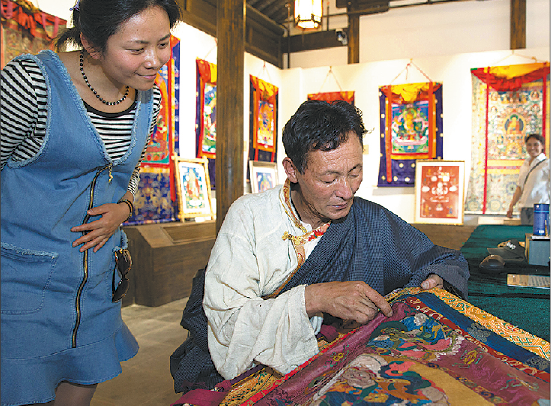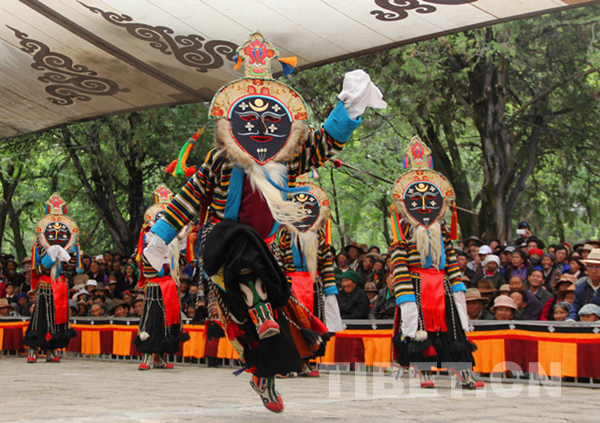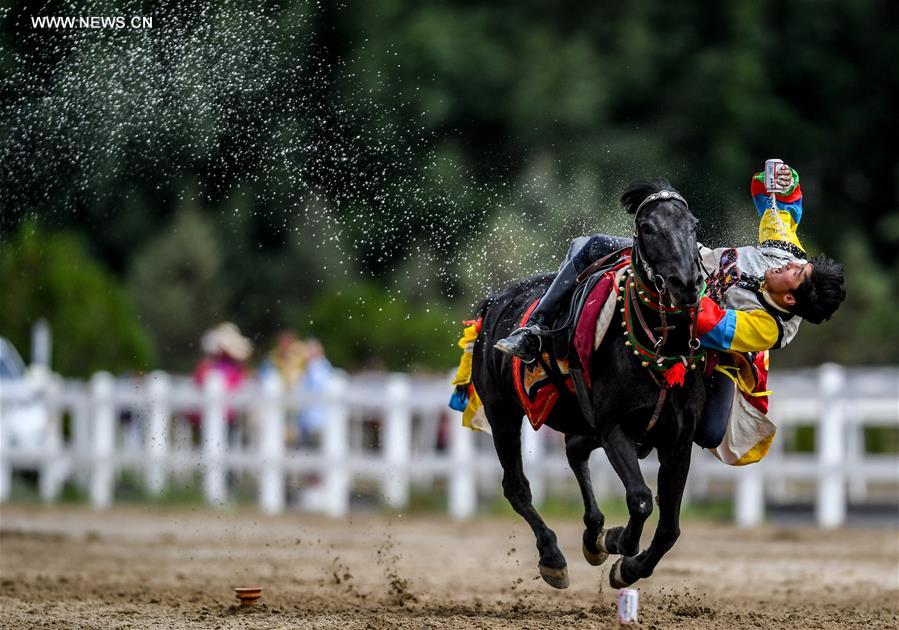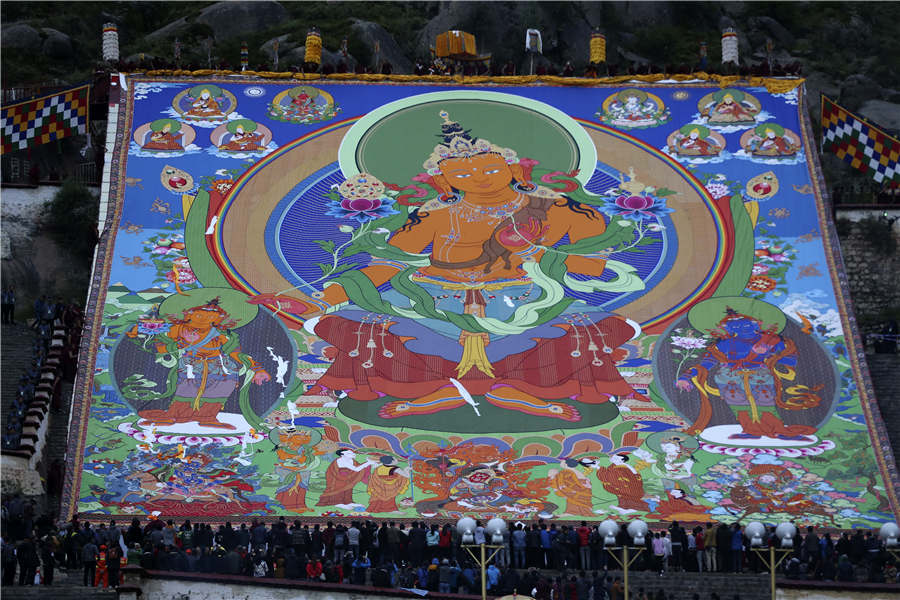Princess' legacy is a feast of culture

Migmar Tsering (right) from Maizhokunggar county shows his thangka embroidery technique during an exhibition. [Photo/China Daily]
When Princess Wencheng of the Tang Dynasty (618-907) royal family married Songtsen Gampo (617-650), king of Tibet, her contemporaries foresaw a better life for her, featuring harmony and unity between the Tibetan and Han ethnic groups.
Thirteen centuries later, Princess Wencheng's legacy is still bringing economic benefits to the people of the Tibet autonomous region.
The Princess Wencheng stage show, which recounts the story of Wencheng's trip to Tibet and her marriage and life with Songtsen Gampo, debuted in Lhasa, capital of the Tibet autonomous region, four years ago.
The show has nurtured a new cultural brand for Tibet and brought a new source of revenue for the locals, attracting large audiences.
Princess Wencheng is one of the best examples of the successful protection, inheritance and rational exploitation of the ethnic culture, local cultural officials say.
Tibet is one of the key regions for the protection of China's ethnic cultures.
Local authorities said that innovative inheritance is the most effective way of protecting traditional cultures.
With new and innovative modes of expression, the cultural legacies can produce new industries and economic growth, the cultural officials and experts say.
Today's growth of the thangka art form is another example of innovative inheritance of local culture. Thangka is a traditional way of painting, featuring religious subjects.
In 2012, Tibet inaugurated the project "A hundred rolls of thangka", aiming to incorporate new expressions into the ancient art form. Subjects relating to the humanities, geography and history have been used in the artistic creations.
Han Shuli, chairman of the Tibet Association of Fine Arts, said: "The new thangka project is a vital innovation for the traditional art form."
Gangchen, chief of the Tibet Cultural Bureau, said: "Injecting new life into traditional cultures and integrating the revitalized cultures with the market are crucial in protecting our colorful and centuries-old heritage."
In recent years, innovations have been made for cultural legacies such as thangka, Tibetan rug making, Tibetan incense, Tibetan paper and Tibetan drama. Products derived from these legacies have been marketed and have produced a number of competitive and influential local cultural brands.
Norbu Tsering, an official with the Tibet Cultural Bureau, said: "The future of Tibet's cultural industry lies in fostering more competitive market players."
The autonomous region had 4,860 cultural enterprises at the end of last year, the bureau said. A number of leading cultural companies, cultural industrial parks and demonstration centers have played an important role in driving the industry's growth.
In 2015, the cultural industry in Tibet reported output valued at 3 billion yuan ($448 million), 15.3 percent more than the previous year and accounting for 2.8 percent of the region's GDP.
Local officials and industry insiders have also highlighted the importance of cultural industrial parks.
Commenting on the Princess Wencheng show, Wu Yasong, chief of the publicity department of the Lhasa Committee of the Communist Party of China, said: "Princess Wencheng has become a popular show, but this is not our ultimate goal."
Your Comment
Name E-mailRelated News
-
;
-
-

-
Watching Tibetan opera during Shoton Festival
From August 21 to 27 the "Sixth Tibetan Opera Exhibition"is taking place at Norbulingka Park and Dzongyab Lukhang Park in Lhasa, capital city of southwest Chin'a Tibet Autonomous Region.
-
-
-

-
Horse riders perform during Shoton Festival in Lhasa
People watch horse riding during the traditional annual Shoton Festival held in Lhasa, capital of southwest China's Tibet Autonomous Region.
-
-
-

-
Lhasa celebrates Shoton Festival
Lhasa city, capital of Southwest China's Tibet autonomous region, began celebrating the annual Shoton Festival on Monday.
-
Based in Lhasa, Tibet Vista is a Tibet travel agency that specialized in Tibet permit, and Tibet tours for both private and group travelers at a local price!
•4 Days Lhasa City Group Tour from USD 460 •8 Days Everest Base Camp Group Tour from USD 850 •15 Days Mt.Kailash Group Tour from USD 1780 •2016 Tibet Train Tours from Beijing, Shanghai, Chengdu, Xining,etc










